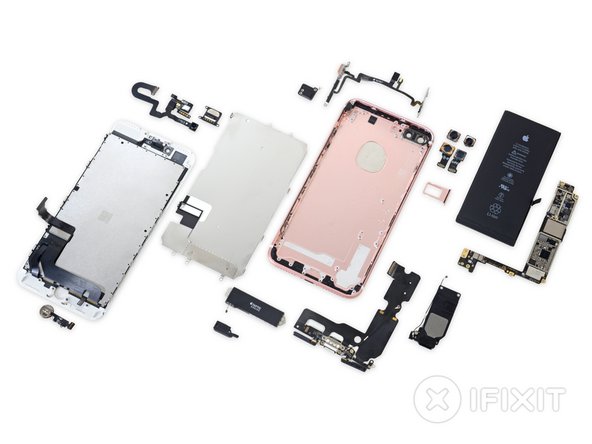What’s inside the best, most advanced iPhone ever?
We mustered up the courage to complete our first of three teardowns: the iPhone 7 Plus. There’s been a lot of buzz about the waterproofiness of the 7 Plus, so we took a look at what contributes to that stellar IP67 rating. A new set of super-sticky adhesive strips keeps the display tightly adhered to the frame. Tons of rubber seals surround points of ingress, like the mute switch and SIM tray. There are also tight seals and fine mesh decking the dual speaker grilles. The mechanical home button has been replaced by a solid state touch sensor, and the phone’s “real” buttons are gasketed to the gills.
But the real question on everyone’s mind—what did Apple do with all that extra space after removing the headphone jack? It’s been replaced by a mysterious plastic bit that might actually channel sound from the beefed up Taptic Engine.
iPhone 7 Plus Teardown highlights:
- The battery is rated at 3.82 V and 2900 mAh, for a total of 11.1 Wh, a slight upgrade over the 10.45 Wh (3.8 V, 2750 mAh) of the 6s Plus, and on par with the 11.1 Wh, 2915 mAh cell found in the 6 Plus.
- The iPhone 7 Plus opens from the side—like a book. It’s still fastened with tabs at the top and Pentalobe screws at the bottom, but you’ve got to cut through hefty adhesive and swing right to open—think micro iPad.
- We discovered never before seen (in an iPhone) tri-point Y00 screws guarding all the usual repair suspects: battery, display, home button, and more.
- The iPhone 7 Plus wins some (modularity and durability) and loses some (uncommon screws and extra adhesive), but all in all nets an iPhone standard 7 out of 10 on our repairability scale.
And be sure to check out the full iPhone 7 Plus teardown on iFixit.com.








0条评论